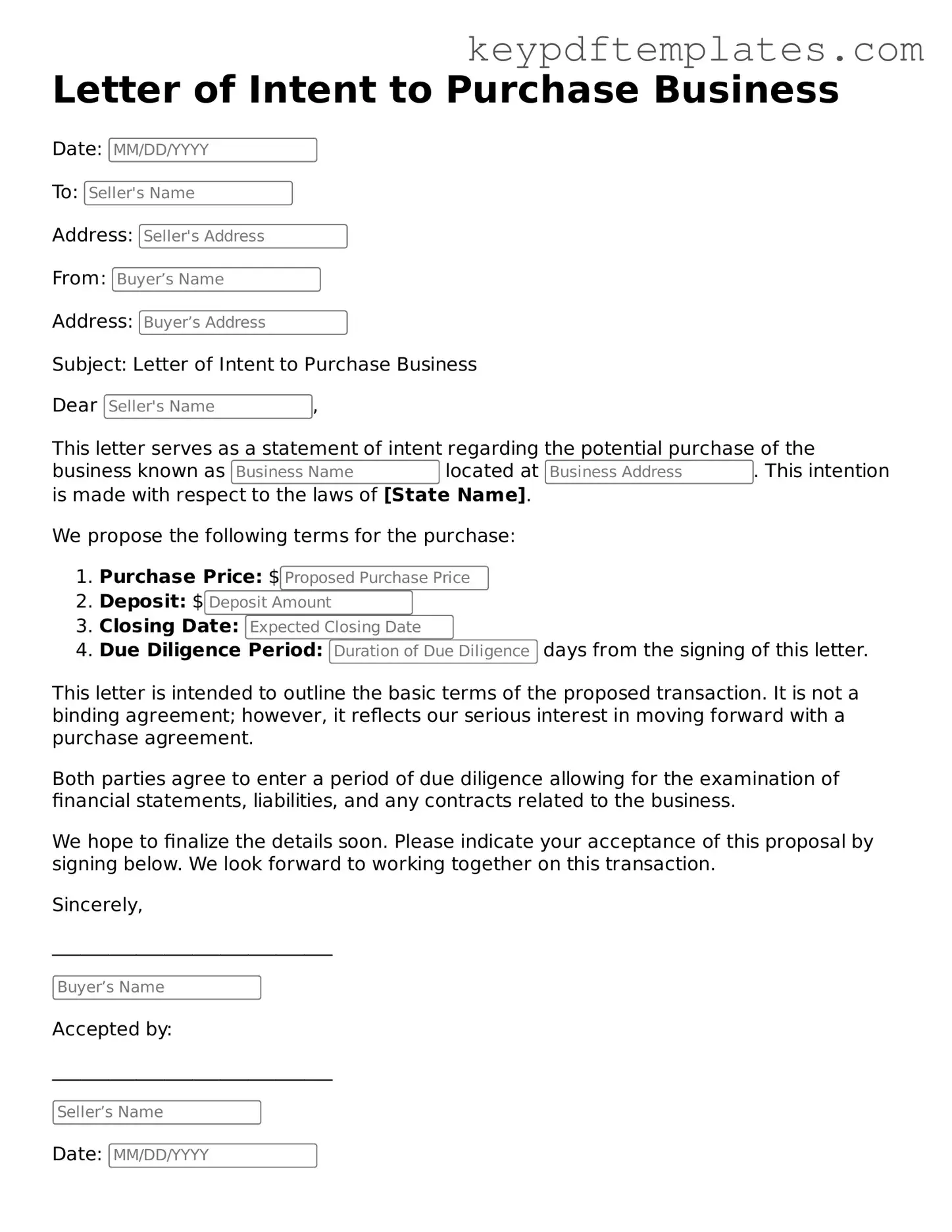Printable Letter of Intent to Purchase Business Template
A Letter of Intent to Purchase Business is a preliminary document that outlines the terms and conditions under which a buyer intends to acquire a business. This form serves as a starting point for negotiations, helping both parties understand the key elements of the potential transaction. By clearly stating intentions, it sets the stage for a more detailed purchase agreement to follow.
Modify Document Online
